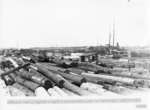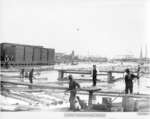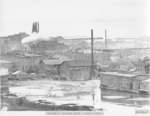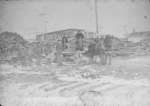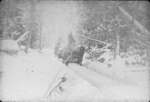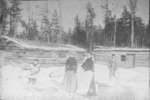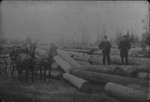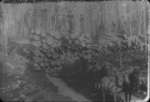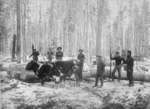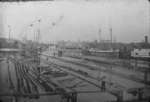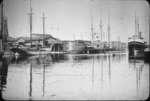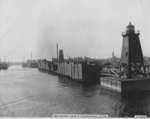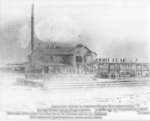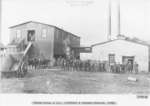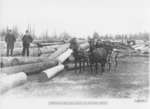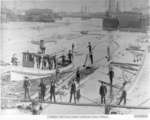Results
- Scene of the Thunder Bay River below Ninth Street Bridge showing the extensive lumber industry along the river. The scow-schooner SEA BIRD was built in Trenton, Michigan in 1881.Scene of the Thunder Bay River below Ninth Street Bridge showing the …
- The sorting gap was where logs were sorted according to owner by reading the mark on the end of each log. The logs were then sent to the relevant mills.The sorting gap was where logs were sorted according to owner by …
- View of lumbering operations along Thunder Bay River and looking across downtown Alpena out into Thunder Bay.View of lumbering operations along Thunder Bay River and looking across downtown …
- Horse drawn wagon with crew in cedar yard in Alpena, Michigan.Horse drawn wagon with crew in cedar yard in Alpena, Michigan.
- People standing outside lumber camp buildings during winter.People standing outside lumber camp buildings during winter.
- Load of logs being pulled out of forest by horse team.Load of logs being pulled out of forest by horse team.
- A team of oxen being used in a logging operation. Oxen were more commonly used is Southern Michigan and were eventually replaces with horses. Oxen were often preferred to horses, because they could bA team of oxen being used in a logging operation. Oxen were …
- This "sorting gap" in the Thunder Bay River was a series of pens made of logs chained together. Men with "pike poles" would stand on the logs, read the "log mark" on the logs coming down the river. TThis "sorting gap" in the Thunder Bay River was a series of …
- A scene along the Thunder Bay River in Alpena, Michigan, with stacks of lumber along the shores and vessels tied up along the river banks.A scene along the Thunder Bay River in Alpena, Michigan, with stacks …
- Alpena lighthouse at the mouth of the Thunder Bay River with Gilchrist Lumber Company lumber lined up along the river awaiting ship transportation. St. Mary's Catholic Church Steeple can been seen inAlpena lighthouse at the mouth of the Thunder Bay River with Gilchrist …
- D.W. Campbell owned part of Mill of Folkerts & Masters. Mill built in 1896 by F.N. Barlow & D. Campbell. F.N. Barlow & Co.; First (?) - A. Campbell & Co.; Kimball & Campbell; Campbell & Nugent; E. WhD.W. Campbell owned part of Mill of Folkerts & Masters. Mill built …
- "Eales Bros. & Co., Oldfield & Walnut Streets, 1895""Eales Bros. & Co., Oldfield & Walnut Streets, 1895"
- Ox-Bow banking grounds. The "ox-bow" was named for a twisting stretch of the Thunder Bay River that resembled a yoke used to harness oxen. The banking grounds (on the banks of the river) were where lOx-Bow banking grounds. The "ox-bow" was named for a twisting stretch of …
- The original collection was transferred to ACPL by the Besser Museum for Northeast Michigan in 2009. The Alpena Postcard Collection contains postcards published from the early years of Alpena’s foundThe original collection was transferred to ACPL by the Besser Museum for …
- Lumber camp crew posing with horse teams and large log pile. Possible Fletcher lumber camp.Lumber camp crew posing with horse teams and large log pile. Possible …
- The letters on the tug represent the Thunder Bay River Boom Company.The letters on the tug represent the Thunder Bay River Boom Company.
- Adam's Bookstore, publisher of this postcard, provided Alpena souvenirs for many years.Adam's Bookstore, publisher of this postcard, provided Alpena souvenirs for many years.
- Logs on a sled being pulled by horses. Sprinkling water on the road and allowing it to freeze made the sled easier to pull.Logs on a sled being pulled by horses. Sprinkling water on the …






